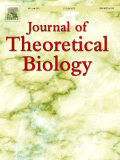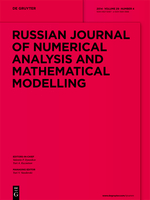
BULLETIN OF MATHEMATICAL BIOLOGY
Scope & Guideline
Innovating Research at the Crossroads of Biology and Mathematics
Introduction
Aims and Scopes
- Mathematical Modeling of Biological Processes:
The journal publishes papers that develop mathematical models to describe a variety of biological phenomena, including population dynamics, disease spread, and cellular interactions. - Interdisciplinary Approaches:
Contributions often adopt interdisciplinary methods, integrating mathematics with biology, epidemiology, ecology, and bioinformatics to address real-world biological challenges. - Stochastic and Deterministic Models:
Both stochastic and deterministic models are featured, allowing for the examination of variability and uncertainty in biological systems. - Application to Health and Disease:
Research often focuses on health-related topics, including disease modeling, treatment strategies, and public health interventions, making significant contributions to medical and epidemiological understanding. - Phylogenetics and Evolutionary Biology:
The journal includes studies related to phylogenetics, evolutionary dynamics, and the mathematical foundations of biological diversity, contributing to our understanding of evolutionary processes. - Modeling Techniques and Computational Methods:
Papers frequently discuss novel mathematical techniques and computational methods for simulating biological systems, enhancing the understanding of complex interactions and dynamics.
Trending and Emerging
- Complex Systems and Network Theory:
There is an increasing focus on the application of complex systems theory and network analysis to biological problems, particularly in understanding interactions within ecosystems and disease spread. - Machine Learning and Data-Driven Approaches:
The integration of machine learning techniques into mathematical modeling is gaining traction, with researchers using these approaches to enhance predictions and model parameterization. - Multiscale Modeling:
Emerging studies are increasingly exploring multiscale modeling approaches that consider biological processes at different scales, from molecular to population levels, reflecting the complexity of biological systems. - Epidemiological Modeling in Response to Global Health Crises:
The journal has seen a surge in publications related to modeling infectious diseases, especially in light of the COVID-19 pandemic, indicating a growing interest in public health-related mathematical biology. - Mathematical Ecology and Conservation Biology:
Research in mathematical ecology, particularly related to conservation efforts and the dynamics of species interactions within ecosystems, is becoming more prominent.
Declining or Waning
- Basic Theoretical Biology:
There appears to be a decrease in purely theoretical contributions that do not apply mathematical models to specific biological questions, indicating a trend towards more applied research. - Simplistic Models of Disease Dynamics:
Models that utilize overly simplistic frameworks without accounting for the complexities of real-world scenarios are less frequently published, as the field moves towards more comprehensive and realistic modeling approaches. - Non-interactive Models:
Research focusing on non-interactive or isolated models, which do not consider the interactions between multiple species or factors, seems to be declining in favor of more integrative studies. - Single-Domain Studies:
There is a noticeable reduction in studies that focus strictly within one biological domain (e.g., only ecological models) without incorporating cross-disciplinary insights.
Similar Journals

JOURNAL OF BIOLOGICAL PHYSICS
Advancing Knowledge at the Intersection of Physics and BiologyThe JOURNAL OF BIOLOGICAL PHYSICS, published by Springer, is a premier interdisciplinary journal that focuses on the intersection of biological sciences and physics. With an ISSN of 0092-0606 and an E-ISSN of 1573-0689, this journal serves as a significant platform for researchers and professionals to publish innovative studies, covering fields such as atomic and molecular physics, biophysics, cell biology, and molecular biology. The journal has been a key player since its inception in 1973, showcasing rigorous scientific inquiry and advancing knowledge within these domains, reflected in its categorization in the Q3 and Q4 quartiles of various relevant fields as of 2023. While it currently operates without an Open Access model, the journal continues to provide pivotal contributions to its audience, supporting academic and practical advancements in biological physics while engaging a broad scope of scholarly discourse.

Networks and Heterogeneous Media
Unraveling the Dynamics of Networks and MediaNetworks and Heterogeneous Media is a distinguished journal published by the American Institute of Mathematical Sciences (AIMS), focusing on the dynamic interplay of networks across various interdisciplinary fields including applied mathematics, computer science, and engineering. With a diverse and robust scope, the journal aims to facilitate the advancement of knowledge regarding complex systems and heterogeneous media through the publication of cutting-edge research. The journal has exhibited notable academic impact, currently positioned in Q2 and Q3 quartiles across several key categories such as applied mathematics, engineering, and statistics, indicating its relevance and influence within the scientific community. Researchers and professionals exploring intricate mathematical models, computational applications, and statistical methodologies will find Networks and Heterogeneous Media an invaluable resource for both foundational studies and innovative applications. The journal regularly publishes high-quality articles, contributing to emerging discussions and developments in a rapidly evolving field.

CHAOS SOLITONS & FRACTALS
Pioneering Research at the Intersection of Chaos and MathematicsCHAOS SOLITONS & FRACTALS, published by Pergamon-Elsevier Science Ltd, stands as a premier journal in the fields of mathematical physics, applied mathematics, and nonlinear dynamics. With an impressive impact factor and a 2023 ranking placing it in the Q1 quartile for both applied mathematics and mathematical physics, this journal serves as an essential platform for groundbreaking research and innovative theories that explore the complex interplay between chaos, solitons, and fractal structures. Established in 1991 and converging research until 2024, the journal features rigorous peer-reviewed articles that appeal to academics, professionals, and students alike, facilitating the dissemination of knowledge within a community passionate about statistical and nonlinear physics. Although not open access, its rich content is critical for those seeking to deepen their understanding and advance their work in these dynamic and multifaceted areas of study.

JOURNAL OF MATHEMATICAL BIOLOGY
Transforming Biological Questions into Mathematical Solutions.Journal of Mathematical Biology, published by Springer Heidelberg, is a leading international journal dedicated to the interdisciplinary field of mathematical modeling and its applications in biology. With an ISSN of 0303-6812 and an E-ISSN of 1432-1416, this journal has established its prominence within the academic community, reflected in its impressive rankings: Q1 in Agricultural and Biological Sciences (miscellaneous) and Q2 in both Applied Mathematics and Modeling and Simulation as of 2023. Covering a broad scope from ecological modeling to biomathematics, the journal serves as a crucial platform for researchers, professionals, and students alike to disseminate innovative work that bridges the gap between theoretical mathematics and biological phenomena. The journal, which spans from its inception in 1974 to 2024, emphasizes rigorous research while ensuring a high level of scholarly communication through its selective review process. With its solid reputation, the Journal of Mathematical Biology continues to significantly contribute to advancements in mathematical sciences and their essential role in understanding complex biological systems.

JOURNAL OF THEORETICAL BIOLOGY
Exploring the Frontiers of Biological TheoryJOURNAL OF THEORETICAL BIOLOGY, published by Academic Press Ltd - Elsevier Science Ltd, stands as a pivotal source of scholarly research in the domains of theoretical and applied biological sciences. Since its inception in 1961, this esteemed journal has contributed significantly to the advancement of knowledge across various fields, including agricultural sciences, applied mathematics, biochemistry, genetics, immunology, and medical research. With a commendable Q2 ranking in multiple categories for 2023, it showcases robust impact throughout the academic community, reflected in its high Scopus rankings, which place it in the top 25% of journals in several categories. The journal's commitment to fostering interdisciplinary research supports its objective of bridging theoretical frameworks with practical applications, making it an essential resource for researchers, professionals, and students alike. With its wide-ranging topics and a keen focus on innovation, the JOURNAL OF THEORETICAL BIOLOGY is indispensable for those seeking to explore the complexities of biological systems and their mathematical modeling.

RUSSIAN JOURNAL OF NUMERICAL ANALYSIS AND MATHEMATICAL MODELLING
Fostering Excellence in Numerical Research and SimulationRUSSIAN JOURNAL OF NUMERICAL ANALYSIS AND MATHEMATICAL MODELLING, published by WALTER DE GRUYTER GMBH in Germany, is a vital resource for researchers and practitioners in the fields of numerical analysis, mathematical modeling, and computational mathematics. With an ISSN of 0927-6467 and an E-ISSN of 1569-3988, this journal has been disseminating significant findings since its inception in 1986 and continues to do so into 2024. Despite its current position in Q4 category quartiles and modest Scopus rankings, it provides a platform for innovative research that contributes to the evolution of modeling and simulation techniques. The journal is committed to fostering an understanding of complex numerical methods and their applications across various scientific disciplines. Although it does not provide Open Access options, it remains a key publication that underscores the importance of rigorous mathematical analysis and its practical implications in today's technology-driven world.

AIMS Biophysics
Fostering collaboration through cutting-edge biophysical research.AIMS Biophysics, published by the American Institute of Mathematical Sciences (AIMS), is an esteemed open-access journal dedicated to advancing the fields of biophysics, biochemistry, molecular biology, and structural biology. Launched in 2014, this journal provides a platform for researchers and professionals to disseminate high-quality research findings that contribute to the understanding of complex biological systems at the molecular level. With an ISSN of 2377-9098, AIMS Biophysics is indexed in Scopus, where it ranks in the fourth quartile across several categories, reflecting its commitment to addressing important issues within the scientific community. The journal aims to foster interdisciplinary collaboration and innovation through the publication of original research, reviews, and methodologies that advance the field. The open-access model ensures that cutting-edge research is freely available, promoting global access to scientific knowledge and enhancing visibility for authors. Nestled in the vibrant scientific landscape of the United States, AIMS Biophysics is poised to impact the evolving discourse in biophysics and related areas as it continues through its convergence period from 2014 to 2024.

Journal of the Royal Society Interface
Pioneering Research, Shaping Tomorrow's InnovationsJournal of the Royal Society Interface is a premier interdisciplinary journal dedicated to the convergence of life sciences, physical sciences, and engineering. Published by the esteemed Royal Society in the United Kingdom, this journal serves as a dynamic platform for innovative research that pushes the boundaries of both fundamental and applied science. With a significant impact factor and ranked in the prestigious Q1 category across multiple domains, including Biochemistry, Bioengineering, and Biomedical Engineering, the journal consistently prioritizes high-quality contributions that innovate and inspire. Accessible to researchers, professionals, and students alike, it aims to cultivate a deeper understanding of complex interactions and synergies among biological and physical systems. From its inception in 2004 to its evolving knowledge contributions through 2024, the Journal of the Royal Society Interface plays a pivotal role in shaping future research directions and fostering collaboration across scientific domains.

BIOSYSTEMS
Fostering collaboration across disciplines to tackle biological challenges.BIOSYSTEMS is a prestigious academic journal published by Elsevier Science Ltd, dedicated to the interdisciplinary fields of applied mathematics, biochemistry, genetics, molecular biology, medicine, modeling and simulation, and statistics and probability. Established in 1967, this journal has carved a niche in presenting innovative research that bridges theoretical and practical aspects of biological systems, making it essential reading for researchers, professionals, and students alike. With a robust impact factor and a Q3 category ranking across various fields, BIOSYSTEMS is recognized for its contributions to advancing scientific knowledge and fostering collaborations among disciplines. The journal's rigorous peer-review process ensures high-quality and impactful articles that address complex biological challenges through quantitative and qualitative methods. As a vital resource for the academic community, BIOSYSTEMS invites submissions that enhance understanding of biosystem processes, enabling readers to stay at the forefront of research trends and applications.

ACTA APPLICANDAE MATHEMATICAE
Fostering Dialogue Between Theory and ApplicationACTA APPLICANDAE MATHEMATICAE is a prestigious journal in the field of Applied Mathematics, published by Springer in the Netherlands. Since its inception in 1983, it has consistently contributed to the advancement of mathematical theory and its applications across various domains, fostering a dialogue between theoretical foundations and practical implementations. The journal holds a commendable position in the academic community, being ranked in the Q2 category and achieving a Scopus rank of 246 out of 635 in Applied Mathematics, which places it in the 61st percentile, reflecting its significant impact and relevance. ACTA APPLICANDAE MATHEMATICAE seeks to disseminate high-quality research articles, review papers, and case studies that address contemporary challenges in applied mathematics, thus inviting submissions that enhance the understanding of both foundational concepts and innovative applications. While it retains a traditional subscription-based access model, the journal emphasizes the importance of broadening the reach of mathematical research. It serves as an invaluable resource for researchers, professionals, and students eager to engage with current advancements and contribute to this dynamic field.